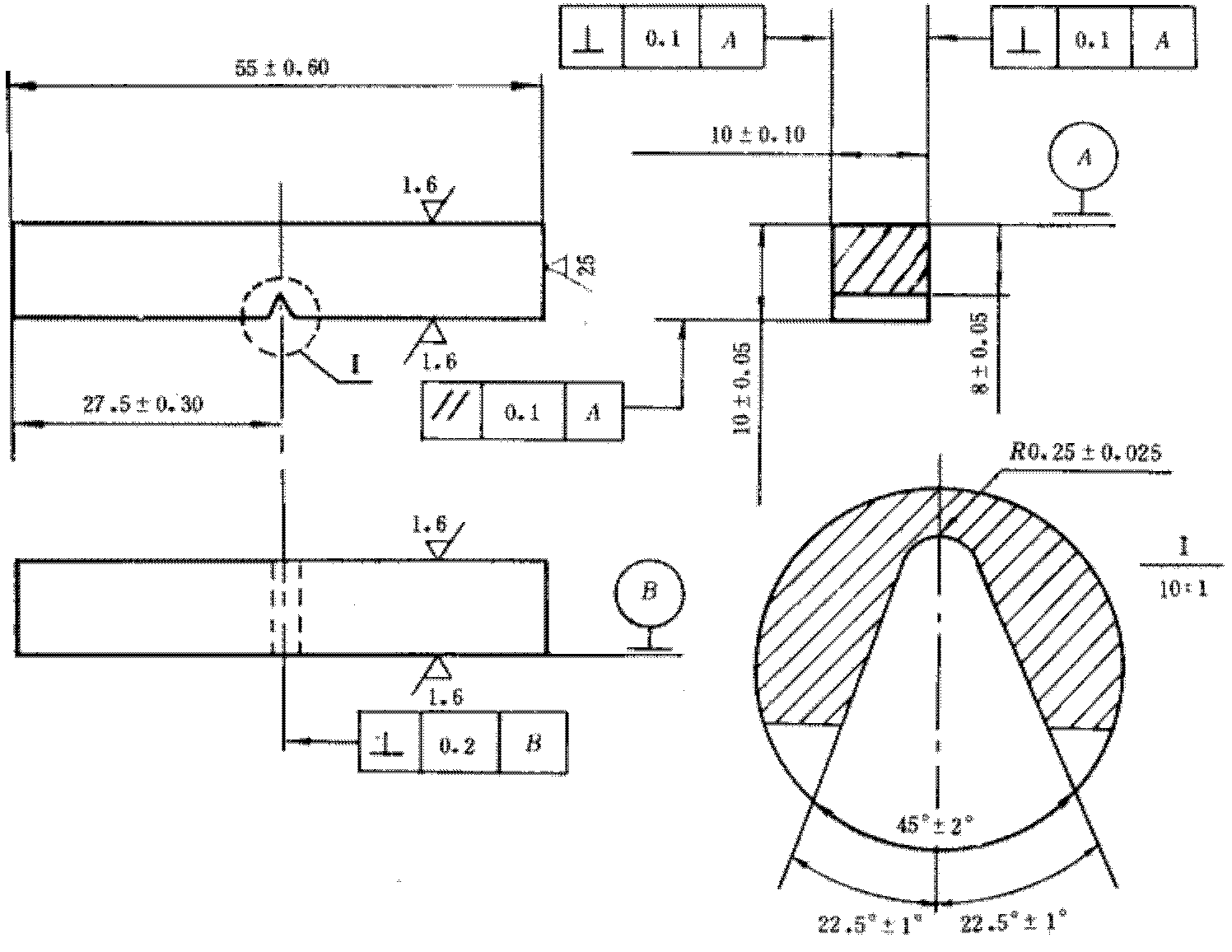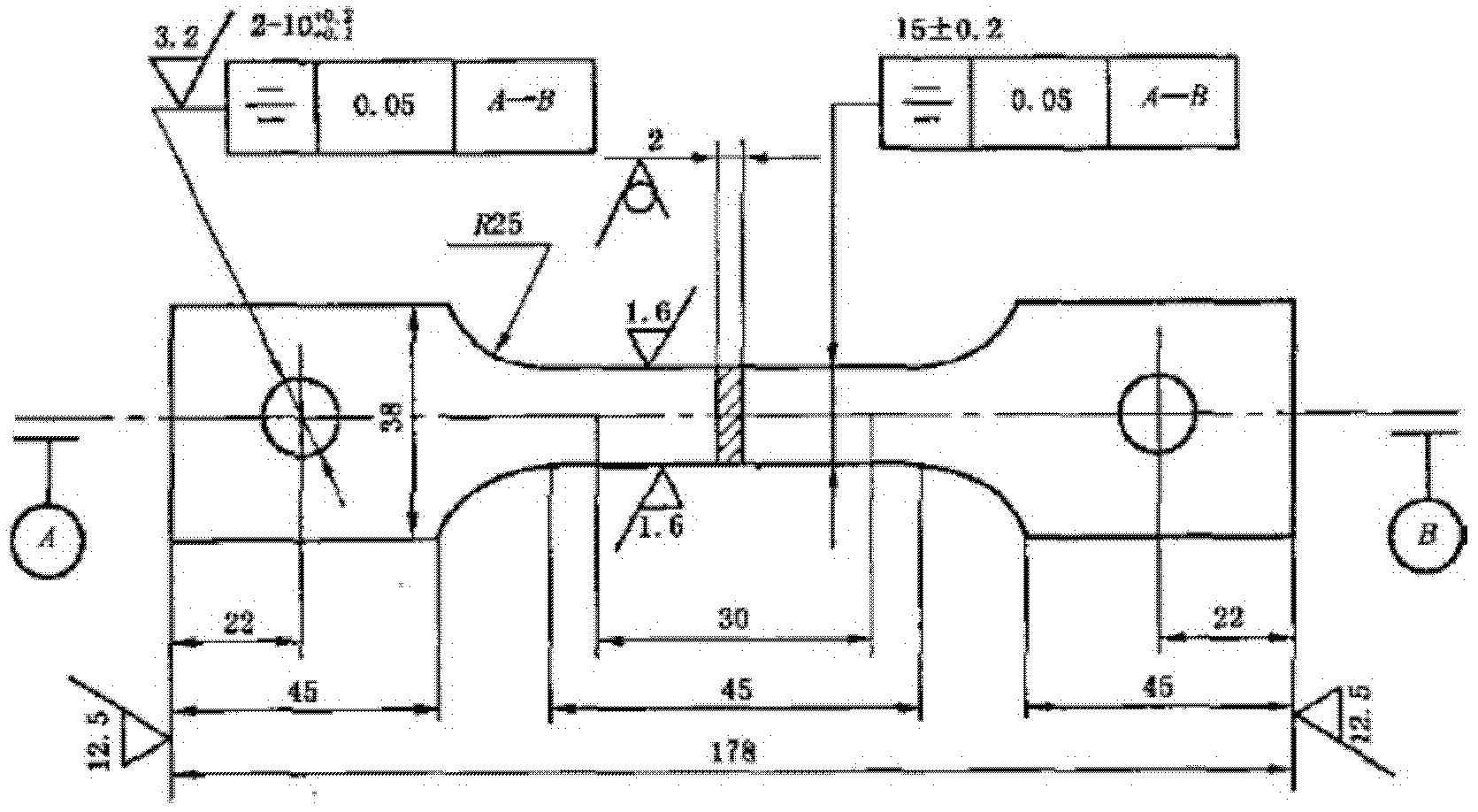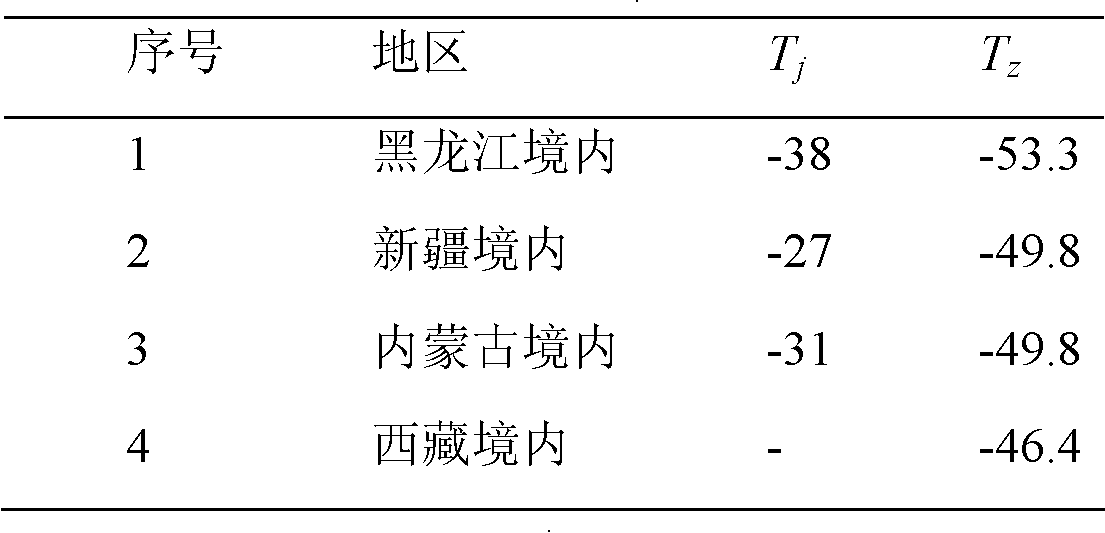Low-temperature angle steel and manufacturing method thereof
A manufacturing method and technology for low-temperature steel, applied in the field of low-temperature steel, can solve problems such as high cost and difficulty in realizing economical production, and achieve the effects of stable structure, pure steel quality and simple process
- Summary
- Abstract
- Description
- Claims
- Application Information
AI Technical Summary
Problems solved by technology
Method used
Image
Examples
Embodiment 1
[0066] Q350MPa hot-rolled angle steel for transmission towers with excellent low-temperature toughness, the weight percentage of its chemical composition is: C: 0.145%, Mn: 0.65%, Si: 0.21%, Ga: 0.005%, V: 0.025%, Ca: 0.001 %; Ti: 0.005%, Als: 0.02%, Cu: 0.16%, B: 0.0005, P: 0-0.01%, S: 0-0.005%, and the rest are Fe and unavoidable trace impurities.
[0067] A method for producing Q350MPa hot-rolled angle steel for low-temperature ductile power transmission towers, the steps of which are:
[0068] (1) Primary refining: control the tapping temperature at 1630-1640°C;
[0069] (2) Carry out converter refining, control refining time at 15min;
[0070] (3) vacuum deoxidation and casting;
[0071] (4) Heating the billet to 1195-1130°C for 10 passes of hot rolling, the final rolling temperature is between 860-940°C, and air-cooled.
Embodiment 2
[0073]Q350MPa hot-rolled angle steel for transmission towers with excellent low-temperature toughness, the weight percentage distribution of its chemical composition is: C: 0.16%, Mn: 1.06%, Si: 0.37%, Ga: 0.006%, Nb: 0.045%, Ca: 0.002 %; Ti: 0.01%, Als: 0.032%, Cu: 0.18%, B: 0.0007%, P: 0-0.01%, S: 0-0.005%, and the rest are Fe and unavoidable trace impurities.
[0074] A method for producing Q350MPa hot-rolled angle steel for low-temperature ductile power transmission towers, the steps of which are:
[0075] (1) Initial refining: control the tapping temperature at 1635-1645°C;
[0076] (2) Carry out converter refining, control refining time at 18min;
[0077] (3) vacuum deoxidation and casting;
[0078] (4) Heating the billet to 1220-1245°C for 10 passes of hot rolling, the final rolling temperature is between 860-940°C, and air cooling.
Embodiment 3
[0080] Q350MPa hot-rolled angle steel for transmission towers with excellent low-temperature toughness, the weight percentage distribution of its chemical composition is: C: 0.16%, Mn: 1.32%, Si: 0.44%, Ga: 0.008%, V: 0.065%, Ca: 0.003%; Ti: 0.025%, Als: 0.045%, Cu: 0.19%, B: 0.001%, P: 0-0.01%, S: 0-0.005%, and the rest is Fe and unavoidable trace impurities.
[0081] A method for producing Q350MPa hot-rolled angle steel for low-temperature ductile power transmission towers, the steps of which are:
[0082] (1) Primary refining: control the tapping temperature at 1640-1645°C;
[0083] (2) Carry out converter refining, control refining time at 20min;
[0084] (3) vacuum deoxidation and casting;
[0085] (4) Heating the billet to 1230-1250°C for 10 passes of hot rolling, the final rolling temperature is between 860-940°C, and air cooling.
PUM
| Property | Measurement | Unit |
|---|---|---|
| yield strength | aaaaa | aaaaa |
| yield strength | aaaaa | aaaaa |
| yield strength | aaaaa | aaaaa |
Abstract
Description
Claims
Application Information
 Login to View More
Login to View More - R&D
- Intellectual Property
- Life Sciences
- Materials
- Tech Scout
- Unparalleled Data Quality
- Higher Quality Content
- 60% Fewer Hallucinations
Browse by: Latest US Patents, China's latest patents, Technical Efficacy Thesaurus, Application Domain, Technology Topic, Popular Technical Reports.
© 2025 PatSnap. All rights reserved.Legal|Privacy policy|Modern Slavery Act Transparency Statement|Sitemap|About US| Contact US: help@patsnap.com



